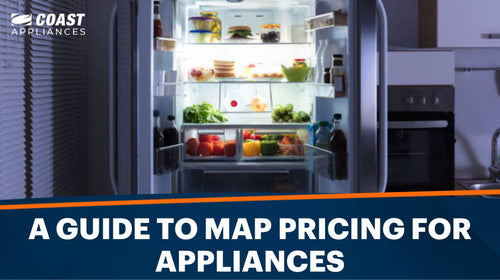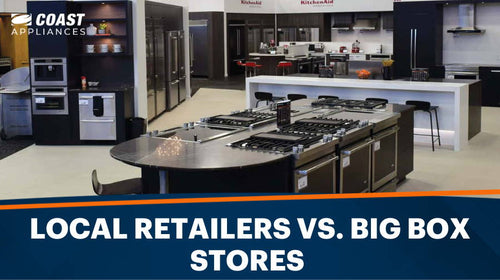For centuries, people have searched for ways to preserve food for longer to prevent food shortages. Thanks to the invention of freezers, we can now store food and keep it fresh for weeks or even months. Modern refrigerators come with freezer compartments, but that may not be enough for some. People like hunters, homesteaders, or those who live far from a market invest in dedicated freezers to preserve food longer than a refrigerator. However, most people don’t utilize their freezers optimally. To ensure your freezer performs its functions optimally and in the way it has been designed, you have to understand the mechanics behind it. The working principles of every type of freezer are pretty much the same. This article will explain in detail how a freezer works and reveal its important components.
In this article, we’ll cover:
- What are the different parts of a freezer?
- How do freezers work?
- FAQs about how freezers work
What Are the Different Parts of a Freezer?
Most Freezers are composed of four main parts: condenser coils, a compressor, an evaporator, and a capillary tube. These parts work in tandem to absorb the heat from the freezer chamber and circulate cold air through it. They are responsible for creating the perfect environmental conditions inside your freezer to keep your food fresher for longer. Here is a list of all these components with a brief summary of their functions to help you understand them better.
- Condenser coils: They work in sync with the freezer compressor to circulate the refrigerant throughout the appliance. As the highly pressurized refrigerant from the compressor enters the condenser coils, the chemical in it converts the vapor into liquid through a heat transfer process.
- Compressor: Located at the lower back of the freezer, this component works together with the condenser coils to maintain the desired temperature inside. The compressor increases the temperature and pressure of the refrigerant and pushes it into the condenser coils.
- Evaporator: The function of the evaporator is to absorb the heat from the food, helping the freezer maintain its low-pressure form. This creates the freezing cold vapor that promotes optimal storage of the food inside. The refrigerant emitted from the evaporator travels back to the compressor to keep the freezing cycle uninterrupted.
- Capillary tube: This tube is designed to cause a huge drop in pressure, which helps lower the temperature of the refrigerant. As the refrigerant enters the evaporator, it passes through the capillary tube, where it turns back to vapor from its liquid state.
How Does a Freezer Work Step by Step?
Now you know what a freezer’s 4 main components are and that vapor compression is the key principle. To make it simple, a freezer works by absorbing heat from the food and circulating cold air inside the appliance to keep the temperature conducive for the long-term storage of food. However, to understand the mechanics behind a freezer in detail, you have to delve deeper to decode the function of the moving stream of vaporized refrigerant.
We have broken it down below so you can easily understand and leverage it to get the most out of your freezer:
- The cooling of the refrigerant starts as a vapor under low pressure. The refrigerant first enters the compressor, where the vapor particles are treated under high pressure. This heats up the refrigerant, transforming it into a highly-pressurized state.
- The compressor then pushes the hot pressurized refrigerant into the condenser coils through a tube. This is why you always feel the heat at the back of the freezer when you touch it or even if you are standing close to it. It is basically the heat coming out of the condenser coils located underneath the freezer. These coils are exposed to room temperature so they can gradually release the heat and cool down.
- While the refrigerant travels through the condenser coils, it slowly loses heat but retains its high pressure. During this process, the refrigerant converts into a moderately warm-temperature liquid.
- Now the inherent pressure of the liquid refrigerant pumps it into the capillary or metering tube. This small tube regulates the pressure of the refrigerant moving to the final component: the evaporator.
- When the liquid refrigerant enters the large evaporator from the small capillary tube, the pressure suddenly drops. It immediately converts the liquid refrigerant back into a low-pressure vapor. The evaporator also absorbs the heat in the vapor, turning it into freezing cold refrigerant. This cold vapor circulates throughout the chamber to maintain the cold temperature inside.
- The freezing cycle continues as the vapor returns to the compressor.
FAQs About How Freezers Work
How does a freezer stay frost-free?
As freezers primarily function by turning the refrigerant from vapor to liquid and vice versa, you would obviously expect some frost inside the chamber, but still, it remains frost-free. The secret to this is the heating coil. Freezers come with a timer that turns on the heating coil at regular intervals, say every 6 hours or so. This keeps the chamber frost-free throughout the freezing cycle.
The heating coil is located close to the freezer or condenser coils, often wrapped between them. As it produces heat, the ice melts off the coils, and the process continues until all the ice is gone. The temperature sensor then senses the rising temperature inside the freezer, and when it goes above the preset range or the standard 32 degrees F (0 degrees C), it turns off the heater coil.
What controls the temperature in a freezer?
There is often a knob or dial found inside the freezer chamber that allows you to control the temperature. It is a thermostat that allows you to set the temperature needed to keep your food in the best condition for the longest time. Modern refrigerators have control panels with buttons instead of knob-like dials.
After you have set the temperature in the thermostat, it controls the temperature of the freezer through the compressor. When the temperature drops below the preset range, the thermostat cuts off the power supply to the compressor. The power supply is restored when the temperature goes above the preset range.
How do freezers make ice?
The ice maker is the hero of any freezer, supplying transparent ice cubes whenever required. However, knowing how this ice maker works will help you use it optimally.
An ice maker comes fitted with a water pump that draws water from a collection sump. The collected water is then poured over the chilled ice tray inside the freezer. The chilling temperature inside gradually freezes the water as it flows over it. As the process repeats and the water starts freezing layer by layer on the well of the ice tray, it turns into ice cubes or takes the shape of the well. An ice maker functions almost the same way as a freezer and a refrigerator.
Final Thoughts
Freezers are life-saving kitchen appliances for people who cannot visit the market frequently or live far from city centers. They are also necessities for hunters and homesteaders. You can store food in bulk and preserve it in its best condition for weeks and even months. Needless to say, freezers are an investment that saves you both time and effort. If you want to add this life-saver appliance to your kitchen or upgrade your existing one, then Coast Appliances is a trusted platform to look for the right model and make. Coast Appliances stocks different varieties of freezer models from top brands. You can check out our freezer buying guide to narrow down your search and pick the best freezer for you.















